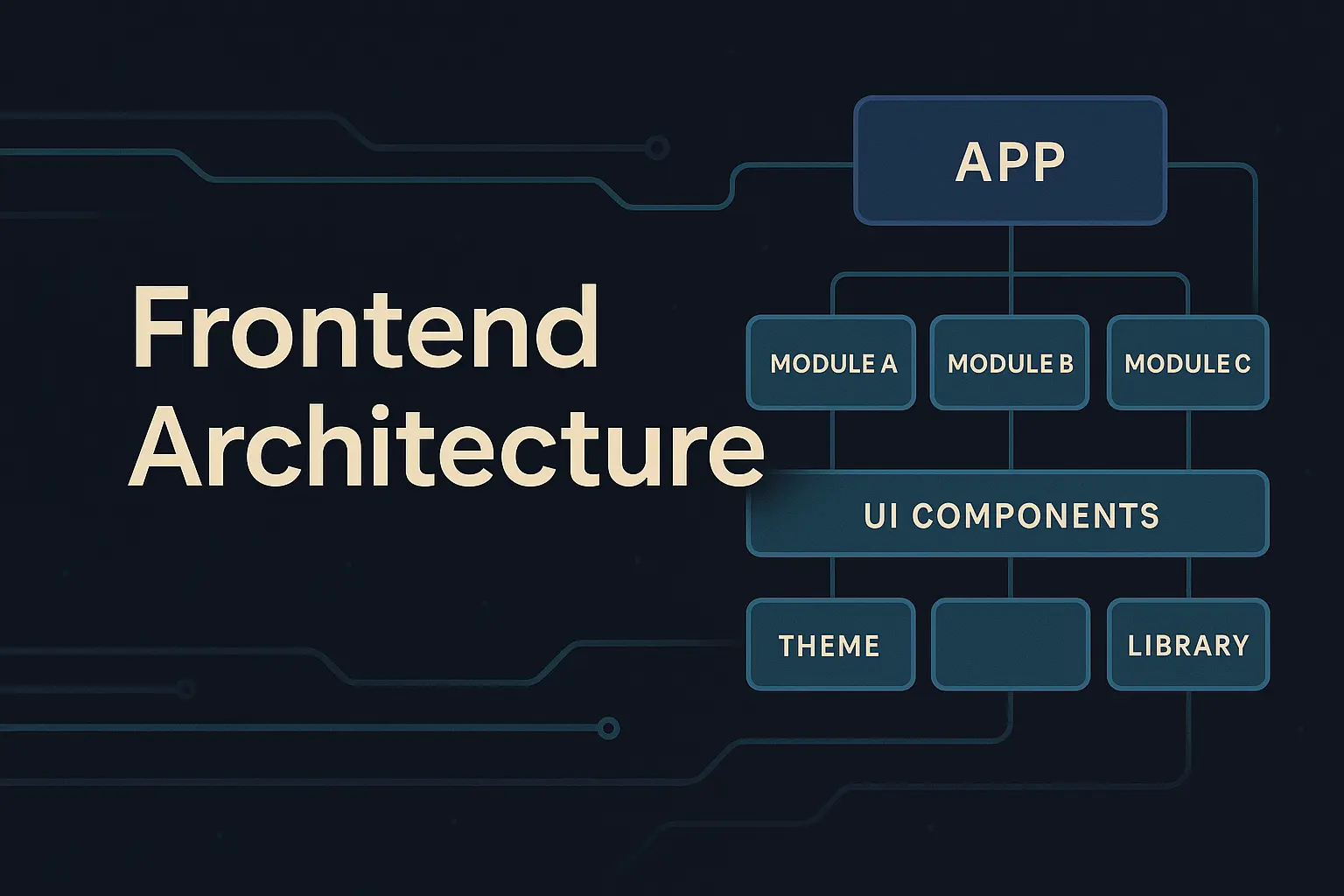Beyond Pretty Code: Frontend Architecture with Purpose

Frontend development is often judged by what’s visible: the polish of a UI, the animations, the responsiveness. But under the surface, what really defines the success of a frontend project is its architecture — how it scales, adapts, and empowers teams.
As a Frontend Tech Lead, I’ve seen firsthand how beautiful interfaces can hide technical debt, bottlenecks, and frustration. And I’ve also seen how thoughtful architectural decisions can transform the developer experience (DX) and create systems that are not just functional — but resilient and joyful to work with.
When Pretty Code Isn’t Enough
I’ve worked on fintech platforms, user management systems, and banking apps in Mexico. In each project, the frontend challenges went beyond styling components — they were about:
- Managing multiple apps and teams working in parallel
- Reusing logic without duplicating bugs
- Ensuring consistent design across dozens of features
- Making onboarding painless for new developers
Design systems help. Lint rules help. But they’re not enough without a clear architectural vision.
My Approach: Modular, Scalable, Intentional
At EFEX, I lead the frontend infrastructure using a modular approach based on:
- Nx workspaces for scalable monorepos
- Microfrontend architecture using Module Federation
- Custom libraries for design tokens, themes, and reusable components
- Automated release pipelines and CI with GitHub Actions
- A strong focus on DX: clear boundaries, fast feedback, and zero ambiguity
Each decision serves a purpose: reducing friction, increasing clarity, and enabling long-term growth.
Practices That Made a Difference
Here are a few practices that changed the game for our team:
- Shared domain logic in independent libraries (e.g. auth, formatting, API adapters)
- Design token management with Style Dictionary to unify theming across apps
- Encapsulated UI components with strict contracts (using TypeScript)
- Lightweight documentation embedded in code (JSDoc + Storybook)
The goal? Structure over sprawl. Purpose over patchwork.
Closing Thoughts
Great architecture doesn’t scream. It supports. It enables. It adapts.
It allows teams to focus on outcomes instead of fixing broken foundations.
If you’re building frontend systems that need to scale — start thinking beyond pretty code.
Think like a systems designer. Think with purpose.
👋 I’d love to hear how you approach frontend architecture.
What principles guide your decisions? What trade-offs have shaped your stack?
Let’s talk.